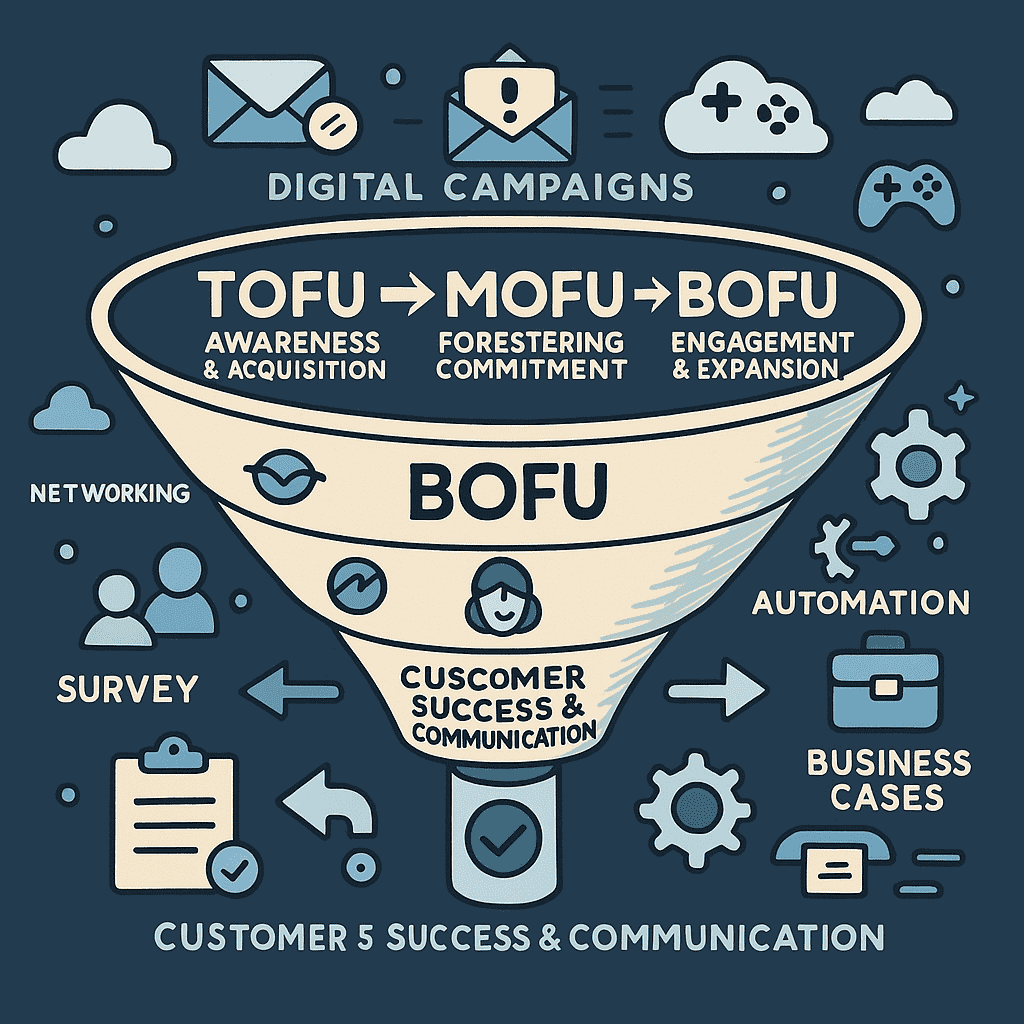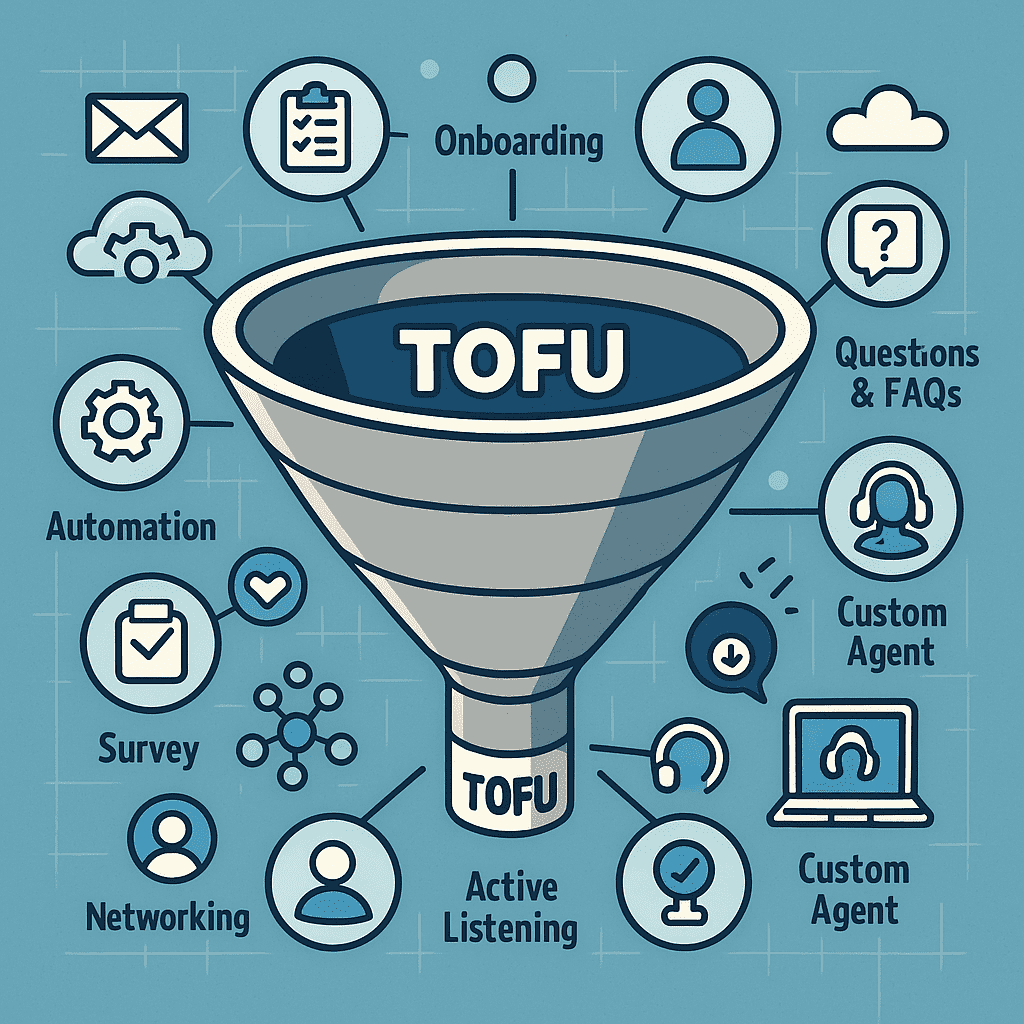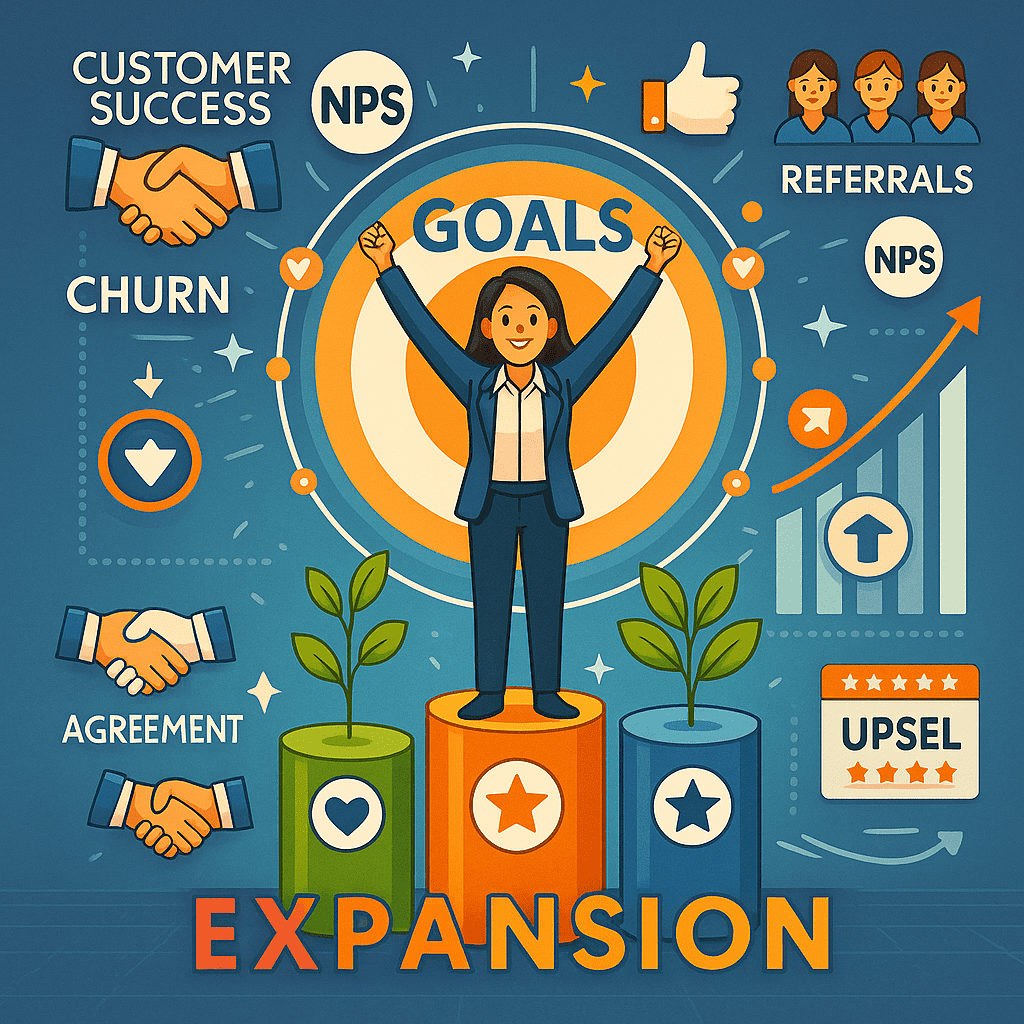
Action Plan: Creating an Effective Funnel for Customer Loyalty
In the previous post, we discussed how to anticipate customer needs by optimizing their journey, generating continuous value through automation and personalized content. These strategies can help us face 2025 successfully, but how can we put them into action?
Today, I bring you a step-by-step plan to optimize your communication channels and ensure that your interactions with customers flow seamlessly.
If you’re a CSM, this is key for your strategy.
⏭️ Why a Communication Funnel is Key in Customer Success
Success in Customer Success is not just about solving issues or managing tickets; it’s about building long-term relationships and trust. To achieve this, we need an effective communication strategy that guides customers through the different stages of their journey with our company.
This is where the communication funnel comes into play.
Just like in sales, Customer Success must structure its communication in phases. This approach helps us identify customer needs, drive engagement, and prevent churn. A well-designed funnel enhances the customer experience, positively impacting key KPIs like retention, expansion, and satisfaction. Let’s dive into how to implement it.
1️⃣ Top of the Funnel (TOFU) - Creating Awareness and Expectations
Objective: Ensure that customers know how to communicate with us and receive relevant information from the very beginning.

-
Welcome and Onboarding: A warm and personalized welcome email, interactive tutorials, and the presence of an account manager are crucial. Customers should feel supported and motivated from day one. Remember, sales have already engaged them, and they’re eager to try your product and achieve their first goals. First impressions matter!
-
Proactive Education: Make sure customers have access to useful content (blogs, videos, webinars, interactive guides). Tools like HubSpot and Zendesk can help automate this.
-
Chatbots and FAQs: Platforms like Landbot automate quick responses and reduce workload for your team.
-
Omnichannel Campaigns: Use a mix of social media, emails, and notifications to reinforce key messages.
- Reduces basic inquiries and unnecessary support tickets.
- Facilitates early product adoption, helping customers achieve their goals faster.
- Increases trust and strengthens brand perception.
📌 Key Metrics: Email open rates, social media interactions, content views, engagement with support materials, first steps completed within the platform.
2️⃣ Middle of the Funnel (MOFU) - Driving Engagement and Resolving Issues
Objective: Ensure that customers use the right channels to solve their problems efficiently while increasing their engagement with the company.
-
Channel Optimization: Implement a quick-response system across chat, email, phone, and social media. Tools like Freshdesk offer an all-in-one solution for managing this.
-
Nurturing and Automation: Maintain active communication through segmented campaigns based on customer goals and needs. With tools like ChurnZero, you can track which parts of your solution they have explored. Offer proactive support to help them reach their objectives with minimal effort, strengthening their engagement and enabling future upselling and cross-selling opportunities.
-
Community Groups and Proactive Support: Creating communities on platforms like Discord allows customers with similar challenges to connect, share experiences, and gain value, fostering transparency while addressing their questions.
-
Personalization: Use CRM tools like Salesforce to tailor communication based on customer stage, goals, and profile. Study success stories and replicate what works.
- Reduces issue resolution time.
- Increases brand interaction and customer commitment.
- Helps detect churn signals before they become a problem.
- Enhances understanding of customer needs.
📌 Key Metrics: Support response time, first-contact resolution rate, community engagement, product usage time, frequency of interactions.
3️⃣ Bottom of the Funnel (BOFU) - Loyalty and Expansion
Objective: Turn satisfied customers into brand ambassadors and drive expansion within their accounts.

-
Satisfaction Surveys and NPS: Regularly assess customer satisfaction and identify areas for improvement. Don’t just focus on the product—consider aspects like service quality at different stages or the effectiveness of provided information. Keep surveys short and to the point, while offering space for open feedback to gather insights for new service opportunities.
-
Upselling and Cross-Selling Strategies: By maintaining an open and approachable communication style, you can identify additional customer needs and offer relevant solutions. Use previous insights to understand what has worked well and what hasn’t, tailoring new strategies accordingly.
-
Success Stories and Testimonials: Platforms like Discord can serve as a showcase where successful customers share their achievements with your solution, building credibility and attracting new users.
-
Referral Programs and Gamification: Encourage customers to recommend your product through referral incentives and interactive engagement strategies. Nothing is more convincing than a recommendation from a trusted person.
- Reduces churn rate.
- Facilitates account expansion.
- Turns customers into ambassadors who attract new users.
📌 Key Metrics: NPS score, expansion rate, number of referrals, engagement and feedback volume.
🔥 Conclusion: A Communication Funnel that Drives Growth and Product Usage
A well-structured funnel in Customer Success not only improves the customer experience but also optimizes resources, prioritizes efforts, and increases the long-term value of each account.
If you implement these steps with the right tools and align your sales, marketing, and product teams, you’ll see a significant boost in customer retention and expansion.
Are you ready to optimize communication within your Customer Success team?
Let me know what strategies you’re using and what challenges you’re facing! 🚀